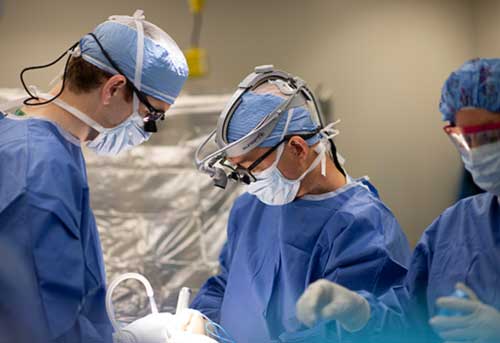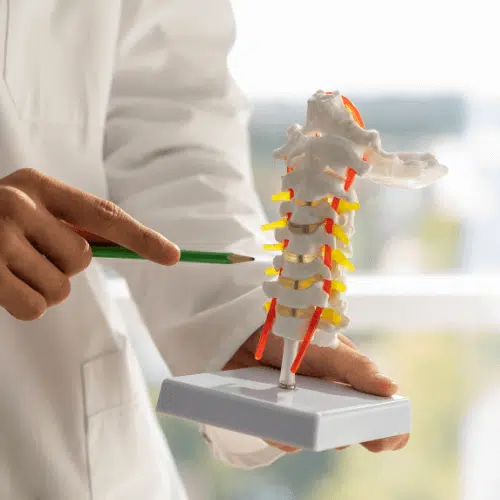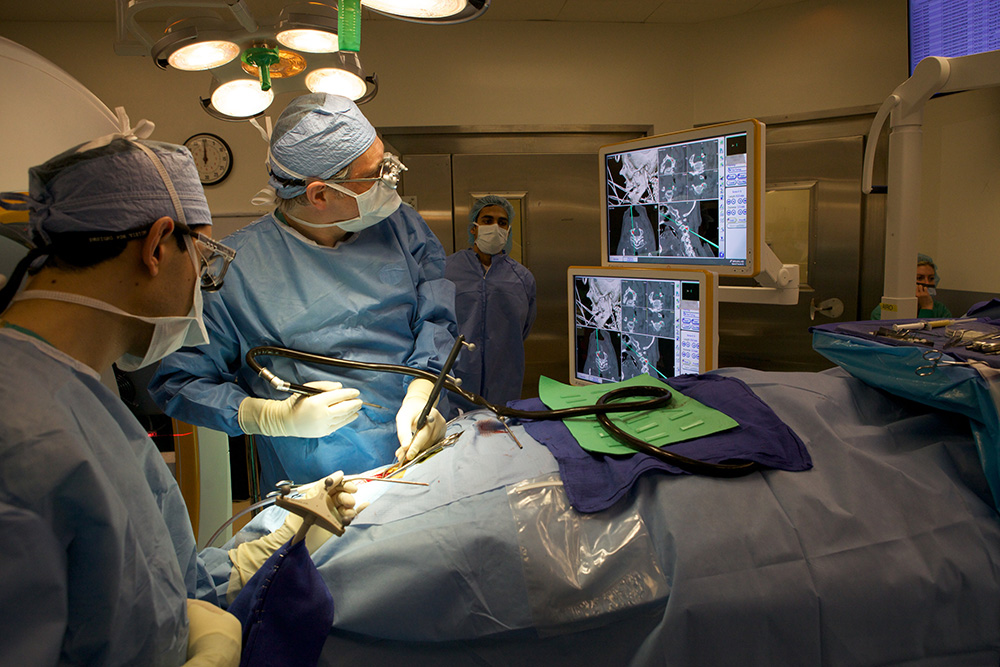An Overview of Spinal Column Conditions That Commonly Outcome in Surgical Therapies
Spinal column problems such as herniated discs, spine stenosis, and degenerative disc condition regularly demand medical treatments when conservative therapies fall short to alleviate relentless signs. These problems not only result in considerable pain but can likewise drastically impair everyday performance and general lifestyle. Recognizing the subtleties of each problem and the corresponding surgical choices, such as discectomy or spinal combination, is essential for efficient management. As we explore these conditions even more, it becomes apparent that the decision-making process bordering medical therapy is complex and warrants cautious consideration.
Herniated Discs
Although several people with herniated discs may discover relief via traditional treatments, surgery ends up being an essential factor to consider when symptoms linger or get worse - best spine surgeons in st louis mo. A herniated disc occurs when the soft inner gel of a spine disc extends with its external layer, potentially leading and compressing neighboring nerves to discomfort, tingling, or weakness in the extremities
Traditional management commonly includes physical therapy, pain medications, and corticosteroid shots, which intend to decrease swelling and boost feature. Nevertheless, in cases where these methods fail to relieve devastating signs and symptoms, surgical choices might be discovered.
One of the most common surgical procedure for herniated discs is a discectomy, which entails the elimination of the herniated portion of the disc to relieve pressure on the affected nerve origin. In extra serious situations, spinal blend might be essential to maintain the impacted vertebrae.
Individuals are advised to review the potential threats and benefits of surgery with their doctor to make an informed decision. Ultimately, the objective of any type of surgical intervention is to bring back function, reduce discomfort, and boost overall lifestyle for individuals struggling with herniated discs.
Back Constriction
Back stenosis happens when the spaces within the spine narrow, causing raised pressure on the spine and nerves. This condition can develop in numerous regions of the back, including the lumbar and cervical areas, usually because of age-related adjustments, such as degenerative disc condition, joint inflammation, or enlarging of ligaments.
Individuals with spinal constriction may offer with signs and symptoms that consist of pain, tingling, tingling, or weak point, largely in the legs or arms. These signs can be aggravated by activities that include standing or strolling, often leading people to look for relief via traditional treatments like physical treatment, drugs, or epidural steroid shots.
However, when these non-surgical interventions fall short to supply ample alleviation, surgical options might be taken into consideration. Common medical treatments for spinal stenosis include laminectomy, which includes the elimination of component of the vertebra to relieve stress, and spine fusion, which stabilizes the affected area. The choice to pursue surgical treatment is commonly based on the seriousness of symptoms, the level of useful problems, and the total health of the client. Motivate medical diagnosis and monitoring are essential to stop additional neurological concession and boost top quality of life.
Spondylolisthesis
Spondylolisthesis happens when one vertebra slips ahead over an additional, resulting in imbalance of the back. This problem can arise from different variables, including hereditary problems, trauma, or degenerative adjustments in the back. It is most typically observed in the back area, particularly at the L4-L5 and L5-S1 levels.

When non-surgical techniques stop working to soothe signs or when considerable nerve compression is present, surgical treatment may be warranted. Surgical choices can consist of back blend or decompression procedures, intended at bring back positioning and alleviating neurological signs.
Degenerative Disc Disease

Individuals with DDD usually experience discomfort that may radiate to the legs or arms, depending on the affected area of the back. The problem can be diagnosed with a mix of medical assessment, imaging researches, and patient history. Treatment options usually begin with conservative procedures, including physical treatment, discomfort administration, and lifestyle alterations. Nevertheless, when these methods stop working to offer adequate relief, medical treatments might be thought about.
Surgical options for DDD may include spine fusion or synthetic disc replacement, targeted at maintaining the influenced section and reducing pain (best spine surgeons in st louis mo). Eventually, the option of treatment is individualized, thinking about the seriousness of the condition, client wellness, and way of life variables
Spine Growths

What variables add to the development of tumors within the spinal column, and just how do they manifest in people? Spinal tumors can occur from various elements, including hereditary tendency, ecological influences, and pre-existing clinical conditions. They can be classified as key growths, coming from in the spine, or secondary lumps, which spread out from other regions of the body. Individuals may present with a variety of signs and symptoms, including localized pain, neurological deficits, weakness, or adjustments in digestive tract and bladder function, depending upon the lump's size and location.
Medical diagnosis generally includes imaging researches such as MRI or CT scans, which aid define the click here for more info growth's characteristics and effect on surrounding frameworks. In examining treatment alternatives, the tumor's grade, place, and kind are crucial considerations. Surgical intervention may be warranted to minimize signs, acquire a biopsy, or remove the tumor entirely. The goal of surgery is often to unwind neural elements and support the spine. Adjuvant treatments, consisting of radiation or radiation treatment, might additionally be essential depending upon the tumor's nature. Early detection and treatment are essential for maximizing results in patients with back growths.
Conclusion
In summary, spinal column discover this problems such as herniated discs, spinal stenosis, spondylolisthesis, degenerative disc disease, and back growths regularly require medical treatment as a result of their prospective to create considerable discomfort and functional impairment. While conventional treatments might supply short-lived alleviation, surgical options come to be vital when symptoms aggravate or persist. Prompt diagnosis and treatment play a crucial role in recovering feature and boosting the lifestyle for afflicted individuals, emphasizing the value of detailed back treatment.

Comments on “Tips for Recovery After Surgery with the Best Spine Surgeons in St Louis MO”